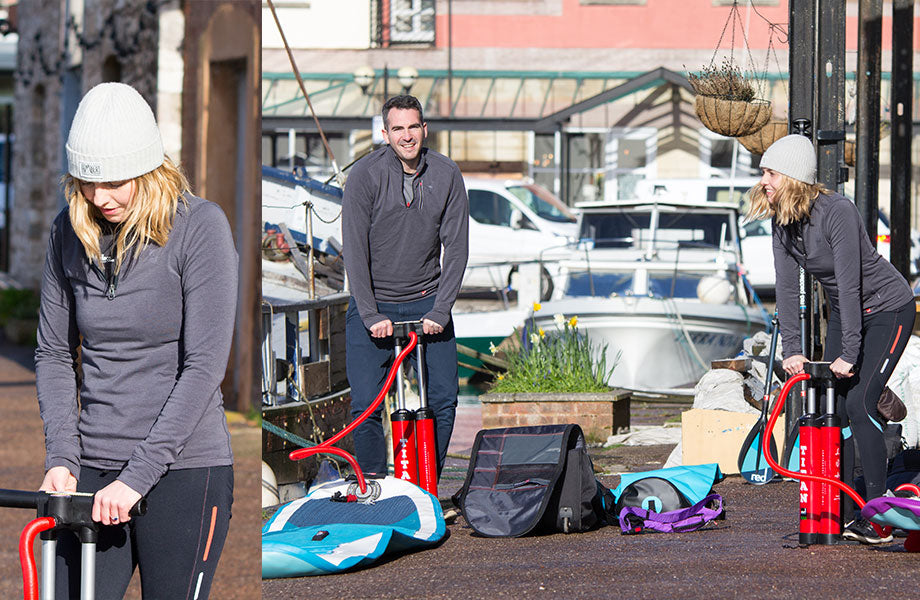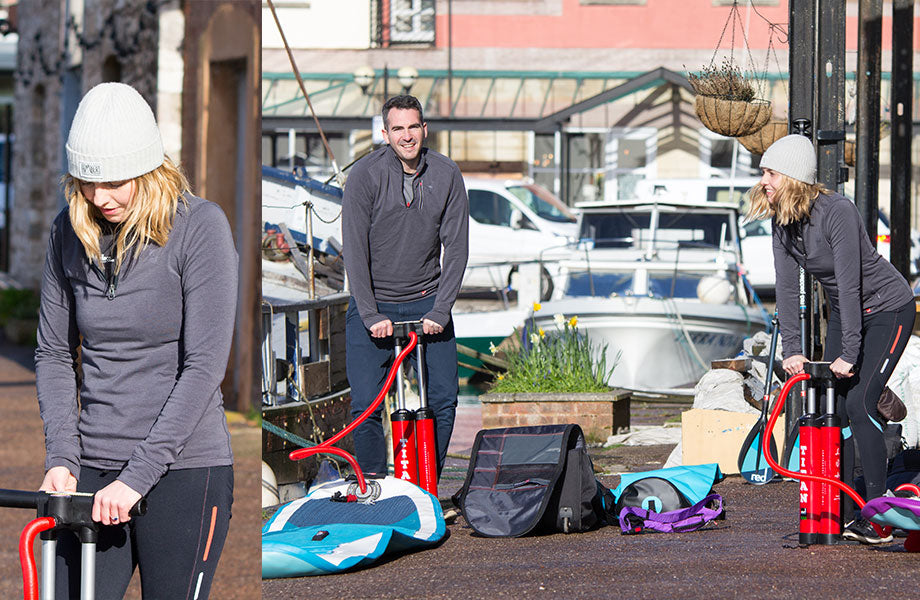New Year, New Goals – with 20% off Zygo bone-conduction swimming headphones
Set your swim goals for 2026. Get inspired by Alistair Brownlee and enjoy 20% off Zygo bone-conduction swimming headphones this January.


Written by Lydia Burdett /
The act of inflating your paddleboard raises a surprising number of questions. There’s the age-old choice of whether to use a hand or electric pump, the decision of where to actually pump your board up, and then the matter of making sure you inflate to the correct pressure. Where the latter of these questions is concerned, you’ll likely have heard the term PSI before, and making sure that your paddleboard is the ‘correct’ PSI is key in guaranteeing the best performance and experience when on the water.
PSI stands for pounds per square inch and refers to the amount of pressure your board can hold. PSI is ranked on a numerical scale; the higher the number, the more inflated a board is and therefore the harder/stiffer it will be.
When inflating a paddleboard, PSI will always be used to measure how much air pressure it contains. The PSI number you inflate your board to will generally depend on several factors, namely your size, weight, intended use and, crucially, the board itself. You should always consult the instructions provided by your particular model as a starting point.
Where Red paddleboards are concerned, know that they are built to withstand large amounts of pressure. Generally speaking, we’d suggest aiming for 15-22 PSI. This should ensure that your board reaches the levels of stiffness required for optimum stability, without you having to exert too much effort inflating your board or battle resistance from the valve when deflating it.
It can be easy to overlook the process of inflating your paddleboard, particularly if you’re in a rush to get in the water or find it a physically demanding task. Essentially, the higher the pressure the stiffer your board will be and the better it will perform on the water. An under-inflated SUP is likely to flex in the middle and will struggle to hold your weight and this could lead to balance and stability issues. Ultimately, this will make it harder for you to refine your paddling technique and will require you to expel excess energy to cut through the water.
As we have touched upon, the answer to the question of ‘what PSI should my paddleboard be’ can vary depending on some individual factors. If you find that things don’t feel quite right after aiming for 15-22 PSI, bear in mind the following advice:
Size and weight are the biggest variables when it comes to how inflated your SUP might need to be. While you might find that your board performs as it should most of the time, any adventure that involves additional cargo packed into your SUP deck bag may feel more challenging. Don’t hesitate to adjust the amount of air you put into your board on these occasions. 25 PSI may be more suitable for heavy loads or heavier individuals.
However, you should never put too much air into your board. Not only will this be particularly time-consuming, but excess pressure can also cause damage to the board which may threaten its lifespan and performance.
It is also important to make sure that you avoid leaving your board inflated where possible. It’s fine to leave your board inflated for short periods if you’re travelling for a multi-day adventure however, if you are storing your board we recommend reducing the pressure in the board or deflating it completely. Temperature can also cause the level of pressure to change, so make sure you top your board up before hitting the water if you do keep it inflated and avoid leaving it in direct sunlight for long periods.
While we hope this guide has made you feel more confident about inflating your paddleboard, feel free to get in touch with our team if you have any further questions. We are always happy to offer you guidance related to your board, as well as provide recommendations for the best pumps to use.
Spend $150 more for free delivery
Your bag is currently empty.
Creating an account has many benefits: